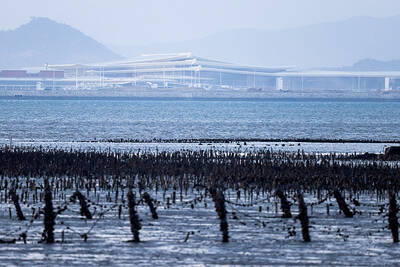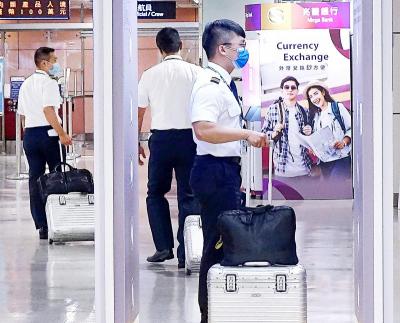A group of young people participating in a forum on transitional justice yesterday urged schools to introduce teaching materials on the history and background of the 228 Incident.
The 228 Incident refers to a military crackdown by the then-Chinese Nationalist Party (KMT) administration on civilian protesters that started on Feb. 27, 1947. Historians estimate that as many as 30,000 people were killed.
“Growing up, our generation only knew of Feb. 28 as a holiday, and we were just happy to have the day off from school, since teachers did not talk much about what had happened during the 228 Incident of 1947,” National Taiwan University College of Medicine student Chang Min-chao (張閔喬) told the forum.
“Only when I entered university did I have more exposure to literature and documents about that period, and the subsequent decades of White Terror rule by the KMT government. Reading the oral histories and interviews as told by victims’ families, I could feel their years-long fear, pain and suffering,” she said.
“We knew nothing about this through primary and secondary school, but it is important for students to know and understand this part of Taiwanese history,” Chang added.
A desire to learn more about that period led campaigner Tsai Yu-an (蔡喻安) to organize the Gongsheng Music Festival (共生音樂節) five years ago, which is this year to feature educational activities, musical performances and an outdoor exhibition on Ketagalan Boulevard in Taipei after a noontime march from the Executive Yuan on Tuesday.
“We started the event through student networking to attract young people to participate and learn more about the 228 Incident. We publish a booklet each year containing photographs and stories to relate young people to this Incident and get them involved in our work,” said Tsai, a graduate student at NTU.
Tsai said she has seen many young people realize the importance of Incident and how it affected Taiwan’s development.
“Many of them are hungry for more information, to read books and stories about that part of history, and to talk to the older generation about the White Terror era and the struggle for democracy,” she said.
Northern Taiwan Society deputy director Lee Chuan-hsin (李川信) said many young people in recent years have demanded the removal of statues of Chiang Kai-shek (蔣介石) and other symbols of the KMT’s authoritarian regime.
“We all know Chiang Kai-shek was the supreme KMT leader who made all decisions and was responsible for the massacres and atrocities following Feb. 28, 1947, but Chiang’s statues are still found in many schools and some people still revere him, paying respect to him year after year,” Lee said.
“It is time to end the blind cult of personality around this ruthless dictator. When worship of Chiang is terminated, then can we have real transitional justice in Taiwan,” Lee added.
The forum was hosted by the Northern Taiwan Society, the Union of Taiwanese Teachers, the Hakka Society and the Ketagalan Foundation.

Three Taiwanese airlines have prohibited passengers from packing Bluetooth earbuds and their charger cases in checked luggage. EVA Air and Uni Air said that Bluetooth earbuds and charger cases are categorized as portable electronic devices, which should be switched off if they are placed in checked luggage based on international aviation safety regulations. They must not be in standby or sleep mode. However, as charging would continue when earbuds are placed in the charger cases, which would contravene international aviation regulations, their cases must be carried as hand luggage, they said. Tigerair Taiwan said that earbud charger cases are equipped

Foreign travelers entering Taiwan on a short layover via Taiwan Taoyuan International Airport are receiving NT$600 gift vouchers from yesterday, the Tourism Administration said, adding that it hopes the incentive would boost tourism consumption at the airport. The program, which allows travelers holding non-Taiwan passports who enter the country during a layover of up to 24 hours to claim a voucher, aims to promote attractions at the airport, the agency said in a statement on Friday. To participate, travelers must sign up on the campaign Web site, the agency said. They can then present their passport and boarding pass for their connecting international

UNILATERAL MOVES: Officials have raised concerns that Beijing could try to exert economic control over Kinmen in a key development plan next year The Civil Aviation Administration (CAA) yesterday said that China has so far failed to provide any information about a new airport expected to open next year that is less than 10km from a Taiwanese airport, raising flight safety concerns. Xiamen Xiangan International Airport is only about 3km at its closest point from the islands in Kinmen County — the scene of on-off fighting during the Cold War — and construction work can be seen and heard clearly from the Taiwan side. In a written statement sent to Reuters, the CAA said that airports close to each other need detailed advanced

The age requirement for commercial pilots and airline transport pilots is to be lowered by two years, to 18 and 21 years respectively, to expand the pool of pilots in accordance with international standards, the Ministry of Transportation and Communications announced today. The changes are part of amendments to articles 93, 119 and 121 of the Regulations Governing Licenses and Ratings for Airmen (航空人員檢定給證管理規則). The amendments take into account age requirements for aviation personnel certification in the Convention on International Civil Aviation and EU’s aviation safety regulations, as well as the practical needs of managing aviation personnel licensing, the ministry said. The ministry